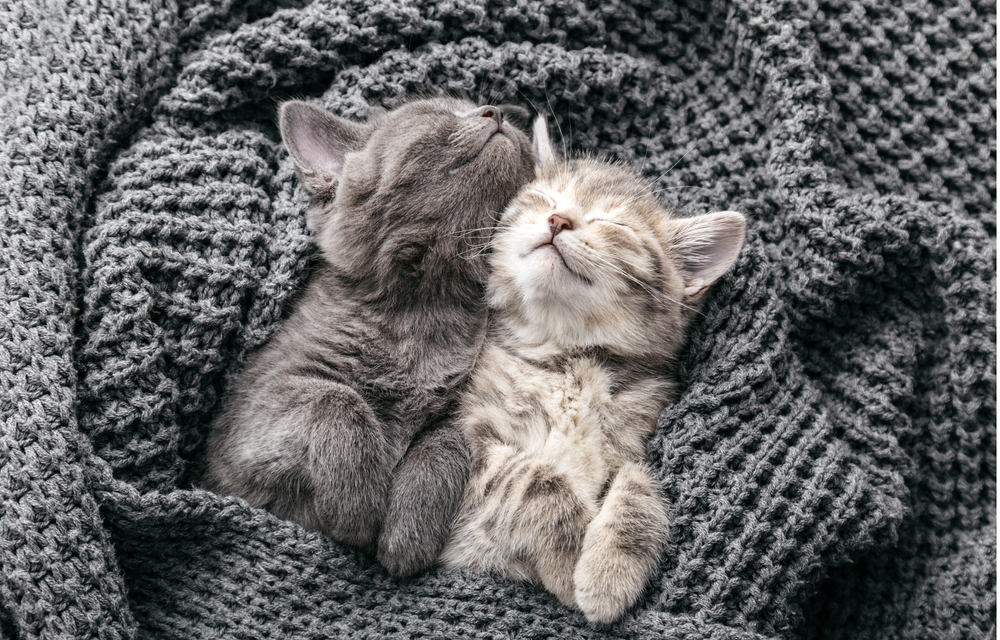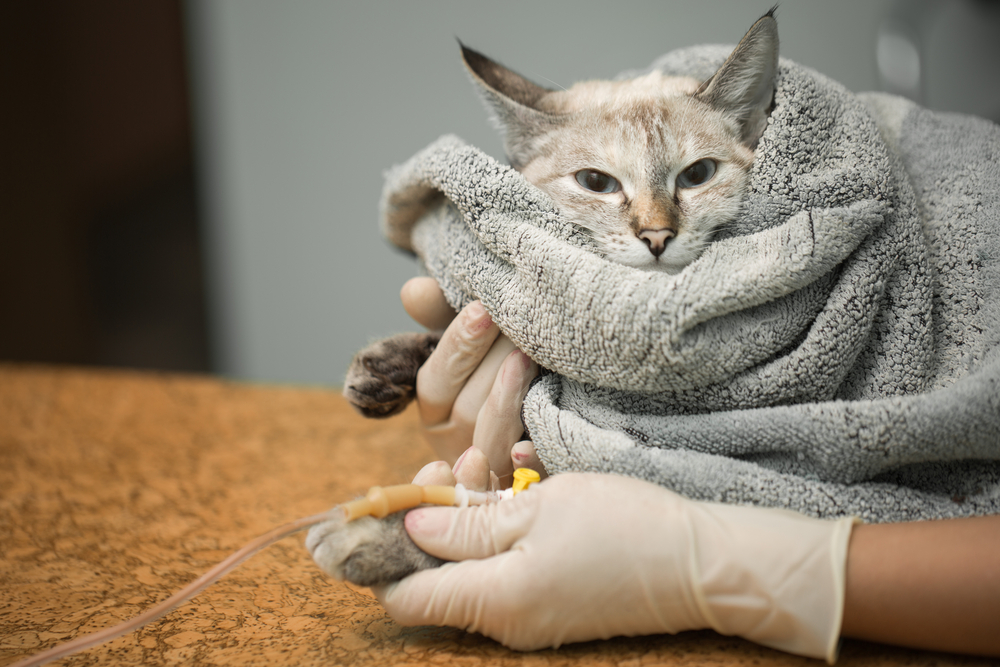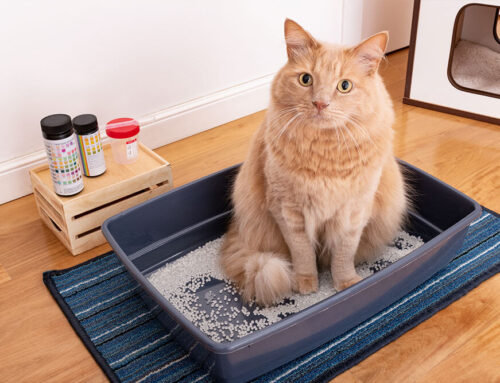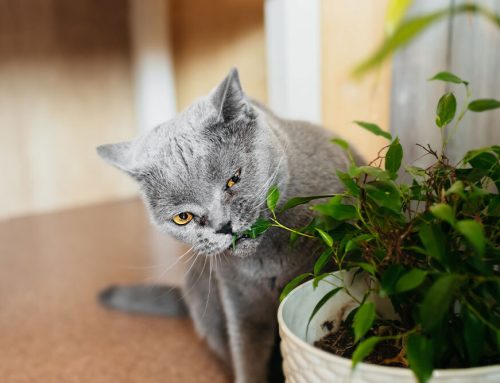Numerous issues can cause feline lower urinary tract disease (FLUTD), since this is not a specific disease, but rather a term used to describe many conditions that can affect the cat’s bladder and urethra. These issues can cause significant health problems for your cat, and can potentially be life-threatening. Our team at Animal Clinic of Council Bluffs wants to provide information about lower urinary tract disease in cats, so you will know the signs if your cat is suffering.
Lower urinary tract disease signs in cats
Diseases causing FLUTD typically present in similar ways, causing signs including:
- Increased urination (pollakiuria) — Inflammation in the bladder or the urethra causes irritation, and can result in a more frequent need to urinate.
- Painful urination (dysuria) — You may notice your cat straining to urinate, and they may vocalize while urinating.
- Bloody urine (hematuria) — Inflammation can cause blood to appear in your cat’s urine. The amount may be microscopic or more obvious.
- Inability to urinate (stranguria) — If your cat is straining to urinate, but producing no urine, they are experiencing an emergency and need immediate veterinary attention.
- Inappropriate urination (periuria) — Pain and irritation in the bladder or urethra can cause your cat to urinate outside their litter box.
- Behavioral changes — Your cat may become more withdrawn or exhibit aggression or irritability. In addition, some cats over-groom to cope with the pain and irritation.
Urolithiasis in cats
Approximately 15% to 25% of cats affected by FLUTD suffer from urolithiasis. Uroliths (i.e., bladder stones) are concretions that most commonly form in the urinary bladder, but can also be found in the urethra and kidneys. The most common uroliths types are struvite and calcium oxalate.
- Struvite urolithiasis — Diets high in magnesium, phosphorus, calcium, sodium, chloride, and fiber with moderate protein content have been associated with increased risk. Female cats are also at higher risk for struvite urolithiasis. Struvite dissolution diets are used to manage the condition, and surgical intervention may be required in some cases.
- Calcium oxalate urolithiasis — Low sodium and low potassium diets are associated with increased risk, and male cats are also at higher risk. Surgical intervention is typically required to address calcium oxalate urolithiasis.
Urethral obstruction in cats
Urethral obstruction is a common veterinary emergency, accounting for up to 9% of small animal emergencies. The obstruction can be caused by urethral plugs, uroliths, or urethral swelling or spasming, leading to an inability to urinate. Male cats are at higher risk, since their urethra is long and narrow. Other risk factors include indoor-only cats, obesity, and an exclusively dry diet. If not addressed promptly, urethral obstruction can cause acute kidney failure, and can have life-threatening consequences in as little as two days. Treatment involves sedating or anesthetizing your cat to relieve the obstruction, with X-rays or ultrasound possibly needed to determine the obstruction’s cause and location. If a spasming urethra is the cause, sedation alone may be enough to relieve the blockage. If other factors are causing the blockage, a catheter will likely be placed to remove the obstruction, and decompress the bladder. Most cats require intravenous fluids to treat the condition, and medications, such as anti-inflammatories, analgesics, and spasmolytics, may also be prescribed.
Feline idiopathic cystitis in cats
Approximately two-thirds of FLUTD cases are caused by feline idiopathic cystitis (FIC), which is a diagnosis of exclusion, and is made when other factors that could cause FLUTD are ruled out. The exact mechanism behind FIC is unknown, but contributing factors include:
- Defective bladder lining — Glycosaminoglycans line the bladder wall, and provide protection from irritating substances found in urine. Cats with FIC tend to have a deficiency in this layer, allowing inflammation to occur.
- Nerve inflammation — Local irritation from urine or brain stimulation in response to stress can stimulate nerves in the bladder wall, causing a release of chemicals that exacerbate the inflammatory response.
- Stress — Stressed cats are at higher risk for FIC, and stressful events frequently trigger disease episodes.
- Abnormal response to stress — Stress normally triggers the release of catecholamines and cortisol from the adrenal glands, but in FIC cats, cortisol levels tend to be low, indicating they have an abnormal stress response.
FIC treatment typically focuses on modifying the diet, encouraging increased water intake, and reducing stress in the cat’s environment. Certain medications may be prescribed if initial management techniques aren’t successful.
Protecting your cat from lower urinary tract disease

Not all FLUTD cases can be prevented, but you can take certain steps to lower your cat’s risk.
- Provide adequate water — Ensure your cat has multiple sources of fresh, clean water at all times.
- Reduce stress — Provide adequate mental and physical enrichment for your cat, to keep them stimulated and help reduce their stress. In addition, minimize major changes in their routine as much as possible.
- Provide an adequate diet — Ask our veterinary professionals what diet is most appropriate for your cat, and feed small, frequent meals.
- Manage the litter box appropriately — Ensure you have at least one litter box for every cat in your home, and one extra. Scoop the litter boxes frequently, and completely change the litter at least once a week. Esure the litter boxes are in quiet, low traffic areas in your home.
FLUTD is a concerning problem for cats, but reducing your cat’s stress and ensuring they are adequately hydrated may help decrease their risk. If your cat is urinating outside their litter box or demonstrating other concerning signs, contact our team at Animal Clinic of Council Bluffs, so we can assess their urinary health.






Leave A Comment